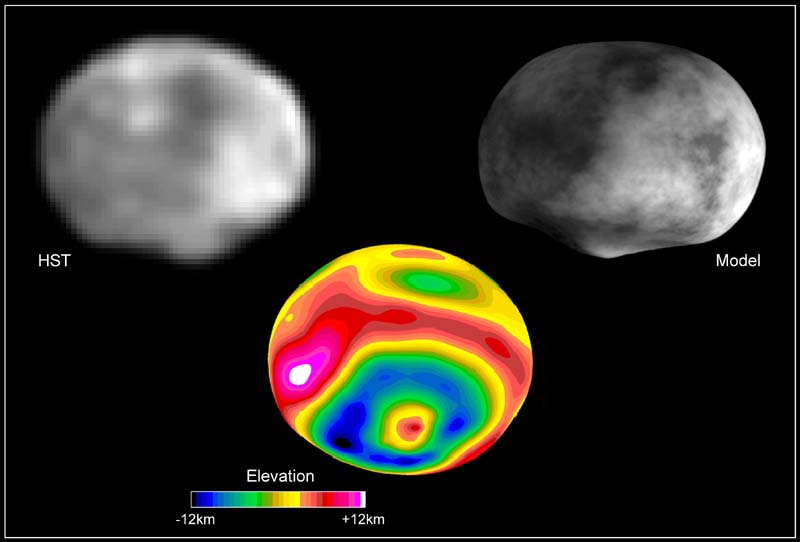 This is the Web Edition of "A Trip Into Space", a Coimbra-based electronic book on space science. Both the texts and the photos are by courtesy of National Aeronautics and Space Administration.
This is the Web Edition of "A Trip Into Space", a Coimbra-based electronic book on space science. Both the texts and the photos are by courtesy of National Aeronautics and Space Administration.
 This is the Web Edition of "A Trip Into Space", a Coimbra-based electronic book on space science. Both the texts and the photos are by courtesy of National Aeronautics and Space Administration. This is the Web Edition of "A Trip Into Space", a Coimbra-based electronic book on space science. Both the texts and the photos are by courtesy of National Aeronautics and Space Administration.
|
A Trip Into Space  Asteroids Asteroids  Asteroid Vesta - Hubble Reveals A Huge Crater Asteroid Vesta - Hubble Reveals A Huge Crater |
|
| See also: Asteroid Fact Sheet, Asteroid Vesta |   |
[left] A NASA Hubble Space Telescope image of the asteroid Vesta, taken in May 1996 when the asteroid was 110 million miles from Earth. The asymmetry of the asteroid and "nub" and the south pole is suggestive that it suffered a large impact event. The image was digitally restored to yield an effective scale of six miles per pixel (picture element).
[center] A color-encoded elevation map of Vesta clearly shows the giant 285- mile diameter impact basin and "bull's-eye" central peak. The map was constructed from 78 Wide Field Planetary Camera 2 pictures. Surface topography was estimated by noting irregularities along the limb and at the terminator (day/night boundary) where shadows are enhanced by the low Sun angle.
[right] A 3-D computer model of the asteroid Vesta synthesized from Hubble topographic data. The crater's 8-mile high central peak can clearly be seen near the pole. The surface texture on the model is artificial, and is not representative of the true brightness variations on the asteroid. Elevation features have not been exaggerated.
Photo Credit: Ben Zellner (Georgia Southern University), Peter Thomas (Cornell University), NASA

Last Update: 2004-Nov-27